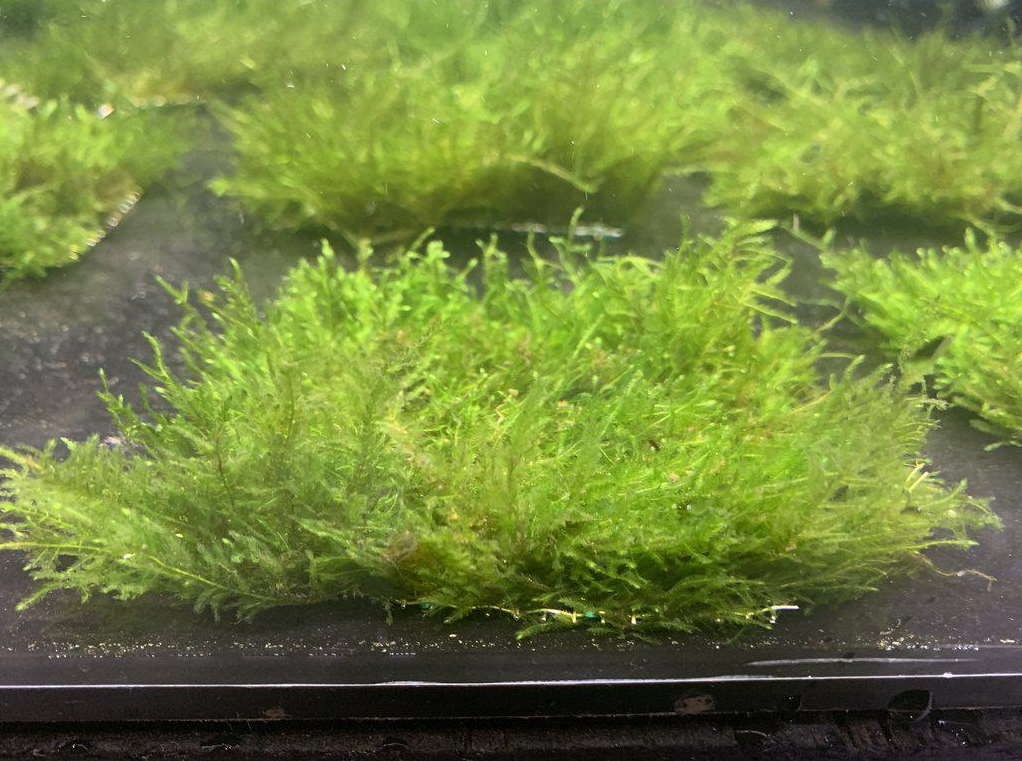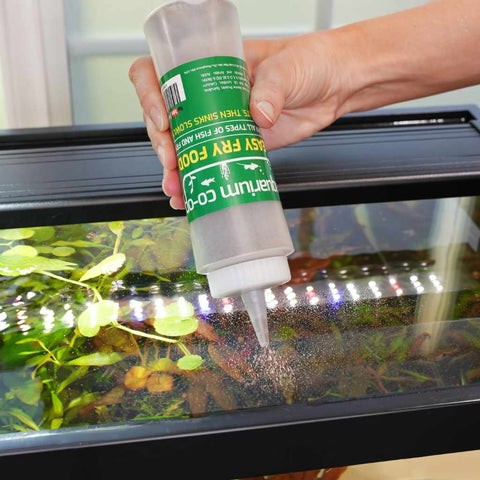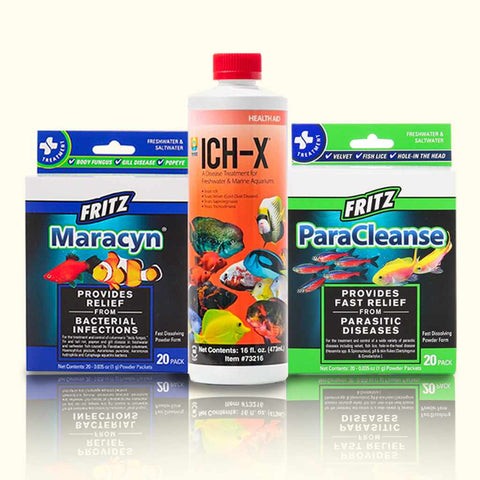Guppies, with their vibrant colors and playful nature, are a favorite among aquarium enthusiasts; Proper guppy care ensures these lively fish thrive. This comprehensive guide from CARS.EDU.VN provides everything you need to know about guppy care, from tank setup to breeding tips. Explore optimal environments, nutrition guidance, and breeding techniques for vibrant, healthy guppies.
1. Why Guppies are the Perfect Aquarium Fish
Guppies (Poecilia reticulata) captivate with their dazzling array of colors, energetic personalities, and ease of breeding, making them a top choice for aquarists worldwide. Discovered in South America in the 1860s, these resilient livebearers initially served as mosquito control. Their introduction to the pet trade sparked selective breeding, resulting in a breathtaking spectrum of colors, patterns, and fin types. Today, guppies are readily available, ranging from affordable options at local pet stores to prized specialty strains from distinguished breeders. Their adaptability and beauty make them a rewarding addition to any aquarium.
2. Setting Up the Ideal Guppy Tank Environment
Creating the perfect habitat is crucial for thriving guppies. This involves tank size, tankmates, and providing enough cover.
2.1. Tank Size and Setup
Guppies typically reach an average length of 2 inches (5 cm). Therefore, a minimum tank size of 5 gallons (19 liters) is recommended for a trio of guppies. However, considering their rapid breeding rate, a 10- or 20-gallon (38-76 liters) aquarium is more suitable in the long term. When setting up the tank, ensure:
- Adequate Space: Larger tanks provide better water stability and more room for guppies to swim and breed.
- Proper Filtration: Use a gentle filter like a sponge filter to prevent tiny fry from being sucked up. Sponge filters also offer a safe surface for beneficial bacteria to colonize.
- Heating: Maintain a stable temperature using an aquarium heater.
- Substrate: Choose a suitable substrate like gravel or sand, which provides a surface for beneficial bacteria and allows for easy cleaning.
- Decorations: Add decorations like rocks, driftwood, and caves to provide hiding places and visual interest.
2.2. Choosing the Right Tank Mates
While a guppy-only tank showcases their vibrant fins and lively behavior, they can also coexist with peaceful tank mates. Suitable companions include:
- Corydoras Catfish: These bottom-dwellers are peaceful and help keep the tank clean by scavenging for leftover food.
- Neon Tetras: Known for their bright colors and peaceful nature, neon tetras add to the visual appeal of the aquarium.
- Other Small, Peaceful Fish: Avoid aggressive species like tiger barbs or bala sharks, which may nip at guppies’ fins or prey on them.
2.3. Providing Plenty of Cover
Guppies, particularly baby fry, need plenty of hiding spots to feel secure and avoid being eaten. Essential elements for a guppy tank include:
- Live Plants: Java moss, hornwort, and other dense plants provide excellent cover for fry and help maintain water quality.
- Floating Plants: These offer shade and security for guppies, reducing stress and mimicking their natural environment.
- Decorations: Caves, rocks, and driftwood create hiding places and add visual interest to the tank.
3. Water Quality: The Key to Happy Guppies
Maintaining optimal water conditions is crucial for the health and longevity of your guppies. Like many livebearers, guppies thrive in slightly alkaline conditions with a pH of 7.0 or higher. They also prefer hard water, which contains essential minerals like calcium and magnesium.
3.1. Ideal Water Parameters
| Parameter | Ideal Range | Notes |
|---|---|---|
| Temperature | 76-78°F (24-26°C) | Warmer temperatures can accelerate growth and reproduction but may shorten lifespan. Lower temperatures can prolong lifespan but slow growth and breeding. |
| pH | 7.0-8.0 | Guppies prefer slightly alkaline conditions. |
| Hardness (GH) | 10-20 dGH | Hard water provides essential minerals. |
| Ammonia (NH3) | 0 ppm | Ammonia is toxic to fish and should be kept at 0 ppm. |
| Nitrite (NO2) | 0 ppm | Nitrite is also toxic and should be kept at 0 ppm. |
| Nitrate (NO3) | Below 20 ppm | High nitrate levels can stress fish and promote algae growth. Regular water changes are essential. |



3.2. Maintaining Water Hardness
If your tap water is naturally soft, consider using supplements to increase water hardness. Options include:
- Wonder Shell: A mineral block that gradually releases calcium and other essential minerals into the water, increasing hardness and buffering pH.
- Crushed Coral or Aragonite: These can be added to the filter or substrate to slowly dissolve and increase water hardness.
- Commercial Water Hardness Supplements: Available at most aquarium stores, these products provide a convenient way to adjust water hardness.
3.3. The Importance of Water Changes
Regular partial water changes are essential for maintaining water quality and preventing the buildup of harmful substances. Aim to perform water changes of 25-50% every 1-2 weeks, depending on the size of your tank and the number of guppies.
Steps for Performing a Water Change:
- Gather Supplies: You’ll need a clean bucket, a gravel vacuum, and dechlorinated water.
- Turn Off Equipment: Unplug the heater and filter before starting.
- Vacuum the Gravel: Use the gravel vacuum to remove debris and uneaten food from the substrate.
- Remove Water: Siphon out the desired amount of water into the bucket.
- Prepare New Water: Treat the new water with a dechlorinator to remove chlorine and chloramine.
- Add New Water: Slowly pour the new water into the tank, avoiding disturbing the substrate or decorations.
- Turn Equipment Back On: Plug the heater and filter back in.
4. Guppy Nutrition: What to Feed Your Fish
Proper nutrition is vital for the health, color, and breeding success of guppies. Guppies are not picky eaters and will readily accept a variety of foods.
4.1. Feeding Frequency and Amount
Feed adult guppies once or twice a day, providing only as much food as they can consume in about one minute. Overfeeding can lead to constipation and other health issues. If you are raising fry (baby guppies), increase feedings to three to five times a day, but offer smaller portions to avoid polluting the water with uneaten food.
4.2. Variety is Key
Offer a diverse diet to ensure your guppies receive all the necessary nutrients. Excellent food choices include:
- High-Quality Flake Food: Choose a flake food specifically formulated for tropical fish, which should form the basis of their diet.
- Live and Frozen Foods: Supplement their diet with live or frozen foods like brine shrimp, bloodworms, daphnia, and mosquito larvae. These provide essential protein and promote vibrant colors.
- Vegetable Matter: Offer blanched vegetables like spinach, zucchini, or cucumber to provide fiber and vitamins.
- Pellets: Offer high-quality pellets as an alternative to flake food to provide protein and nutrients.
4.3. Special Considerations for Fry
Fry require a diet rich in protein to support their rapid growth. Suitable foods for fry include:
- Infusoria: Microscopic organisms that provide an excellent first food for newly hatched fry.
- Liquid Fry Food: Specially formulated liquid foods designed for fry, providing essential nutrients in an easily digestible form.
- Baby Brine Shrimp: Newly hatched brine shrimp are a nutritious and readily accepted food for fry.
- Crushed Flake Food: Grind flake food into a fine powder to make it easier for fry to eat.
- Easy Fry and Small Fish Food: A high-quality, salmon-based food that was specially developed for guppies and other community nano fish. The easy-to-use squeeze bottle allows you to feed tanks fast and efficiently.
5. Guppy Breeding: A Rewarding Experience
Guppies are prolific breeders, making them an excellent choice for those interested in fish breeding.
5.1. Identifying Male and Female Guppies
Distinguishing between male and female guppies is relatively straightforward.
- Males: More colorful, smaller, and possess a modified anal fin called a gonopodium, which resembles a pointy, horizontal stick under their belly.
- Females: Usually larger, less colorful, and have a fan-shaped anal fin behind their bellies.
5.2. The Guppy Gestation Period
If you have at least one male and one female guppy (or your female guppy originally came from a tank with males), the female is likely pregnant. Female guppies give birth approximately every 30 days. They can store sperm, so a single mating can result in multiple pregnancies.
5.3. Creating a Breeding Environment
To maximize fry survival, provide a suitable breeding environment.
- Breeding Tank: A separate breeding tank with plenty of hiding spots can protect fry from being eaten by their parents.
- Breeding Box or Net: These devices isolate the pregnant female, allowing her to give birth safely. However, they can be stressful for the female and should only be used temporarily.
- Dense Plant Cover: Java moss, hornwort, and other dense plants provide excellent hiding places for fry in the main tank.
5.4. Caring for Guppy Fry
Once the fry are born, ensure they have access to adequate food and a clean environment.
- Feeding Fry: Feed fry multiple times a day with small amounts of fry-specific food.
- Water Quality: Perform frequent small water changes to maintain optimal water quality.
- Separation: Once the fry are large enough to avoid being eaten by their parents (usually around two to three months old), you can move them to a separate grow-out tank.
6. Common Guppy Diseases and Prevention
While guppies are generally hardy fish, they can be susceptible to certain diseases, especially if kept in poor water conditions.
6.1. Common Diseases
| Disease | Symptoms | Treatment |
|---|---|---|
| Ich (White Spot) | Small white spots on body and fins, flashing against objects, lethargy. | Increase water temperature, use ich medication. |
| Fin Rot | Ragged or frayed fins, fin discoloration, lethargy. | Improve water quality, use antibacterial medication. |
| Dropsy | Swollen abdomen, raised scales, lethargy. | Isolate affected fish, improve water quality, use antibacterial medication. |
| Velvet | Gold or rust-colored dust on body, flashing, clamped fins. | Use copper-based medication, keep tank dark. |
| Constipation | Swollen abdomen, lack of appetite, stringy feces. | Feed blanched vegetables, use Epsom salt bath. |
6.2. Preventive Measures
Preventing diseases is always better than treating them. Implement the following measures to keep your guppies healthy:
- Maintain Excellent Water Quality: Perform regular water changes and monitor water parameters.
- Provide a Balanced Diet: Feed your guppies a variety of high-quality foods.
- Quarantine New Fish: Quarantine new fish for several weeks before introducing them to the main tank to prevent the spread of disease.
- Avoid Overcrowding: Overcrowding can stress fish and make them more susceptible to disease.
- Observe Your Fish Regularly: Watch for any signs of illness and take action promptly.
7. Why Are My Guppy Fish Dying?
Guppies sold in pet stores can sometimes be weaker due to inbreeding, mass production, and crowded conditions, making them more prone to disease. These factors, combined with the stress of shipping, can weaken their immune systems.
Tips for Ensuring Guppy Health:
- Provide Clean Water: Maintain excellent water quality through regular water changes.
- Offer a Good Diet: Feed a balanced diet to boost their immune systems.
- Consider Medications: Be prepared to treat illnesses and infections with appropriate medications.
8. Guppy Lifespan and Factors Affecting It
Guppies typically live for two to three years. However, several factors can influence their lifespan.
- Temperature: Warmer temperatures accelerate growth and reproduction but may shorten lifespan. Lower temperatures can prolong lifespan but slow growth and breeding.
- Water Quality: Poor water quality can stress fish and shorten their lifespan.
- Genetics: Inbred guppies may have shorter lifespans and be more susceptible to disease.
- Diet: A balanced diet is essential for a long and healthy life.
Guppies are truly captivating fish, ideal for both beginners and experienced aquarists. Their vibrant colors, manageable size, and breeding habits provide endless fascination. By understanding and meeting their needs, you can enjoy a thriving, rainbow-hued aquarium.
9. Advanced Guppy Care Tips
For aquarists looking to take their guppy keeping to the next level, consider these advanced tips:
- Selective Breeding: Experiment with selective breeding to develop unique colors and fin types.
- Show Guppy Keeping: Participate in guppy shows and competitions to showcase your prized fish.
- Rare and Exotic Guppies: Explore the world of rare and exotic guppy strains, which can be highly sought after by collectors.
- Planting Live Aquarium Plants: Research and use live aquarium plants to give cover for the fry to escape being eaten by bigger fish.
10. Conclusion: The Joy of Guppy Keeping
Keeping guppies is an incredibly rewarding hobby that brings beauty and life into your home. By following the guidelines in this article, you can ensure that your guppies thrive and provide you with years of enjoyment. Remember to stay informed, adapt your care techniques as needed, and never stop learning about these fascinating fish.
At CARS.EDU.VN, we’re dedicated to providing you with the knowledge and resources you need to succeed in the aquarium hobby. Whether you’re a beginner or an experienced aquarist, we’re here to help you create a thriving aquatic environment for your guppies and other fish.
Are you struggling to find reliable information and services for your car care needs? CARS.EDU.VN offers detailed guides, expert advice, and trusted service recommendations to help you keep your vehicle in top condition. Visit CARS.EDU.VN today to explore our resources and find the solutions you need. Contact us at 456 Auto Drive, Anytown, CA 90210, United States. Whatsapp: +1 555-123-4567. Website: cars.edu.vn.
FAQ: Common Questions About Guppy Care
Here are some frequently asked questions about caring for guppies.
1. What is the ideal tank size for guppies?
A 5-gallon tank is the minimum for a trio, but a 10- or 20-gallon tank is better for long-term care.
2. What do guppies eat?
Guppies eat flake food, brine shrimp, bloodworms, and blanched vegetables.
3. How often should I feed my guppies?
Feed adult guppies once or twice a day, and fry three to five times a day.
4. How can I tell if my guppy is pregnant?
Pregnant guppies have a larger abdomen and a dark gravid spot near their anal fin.
5. How often do guppies give birth?
Guppies give birth approximately every 30 days.
6. What water temperature is best for guppies?
The ideal water temperature is 76-78°F (24-26°C).
7. How often should I change the water in my guppy tank?
Perform water changes of 25-50% every 1-2 weeks.
8. Why are my guppies dying?
Common causes include poor water quality, disease, and stress.
9. Can guppies live with other fish?
Yes, guppies can live with peaceful tank mates like corydoras catfish and neon tetras.
10. How long do guppies live?
Guppies typically live for two to three years.